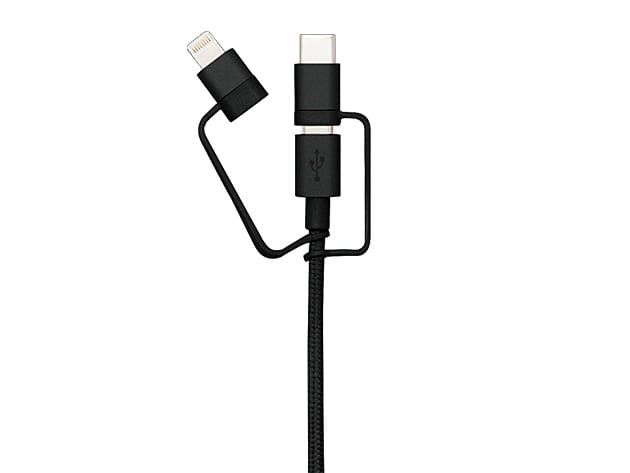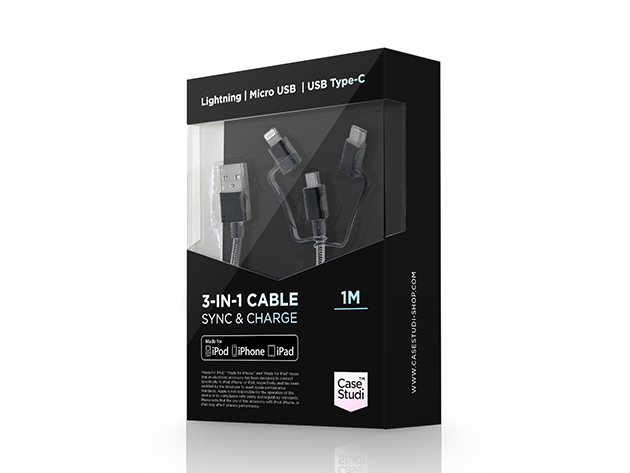3-in-1 MFi Lightning, MicroUSB & USB-C Cable for $19
March 14, 2017 / by Marco / Categories : Business, deals, design, entrepreneur, website



KEY FEATURES
You’ve got lots of devices, and lots of individual cables to charge them with. They wrestle and coil in your bag like a pit of angry snakes, awaiting you to reach in and pull out four chargers all tangled together. No longer! This cable combines Lightning, microUSB, and USB-C connectors in a single tough, braided, aluminum cord. It truly is one cord to rule them all.
- Charge Apple, Android, & USB-C compatible devices w/ a single cord
- Use w/ the newest MacBook model without having to buy anything extra
- Save money on buying new chargers when you’ve got 3-in-1
- Use for longer thanks to the tough aluminum housing & braided cable
PRODUCT SPECS
Details & Requirements
- MFi-Certified
- Material: aluminum housing and braided cable
- Length: 1 m
Includes
- 3-in-1 Lightning, MicroUSB & USB-C Cable (black)
OTHER ARTICLES YOU MAY LIKE

A SMALL BUTTON, A BIG MILESTONE: MY FIRST SUPER THANKS
Every creator has milestones that feel both modest and momentous. Your first upload. Your first comment. Your first subscriber. And then one day, among the usual notifications, a new one pops up: your first Super Thanks. Mine came from a generous viewer, Frank Castlenut, who left a donation of five dollars alongside a kind note. […]
read more
NEW RUNNING BELT ON TEST: FIRST IMPRESSIONS AND HONEST THOUGHTS
There’s a special kind of anticipation that comes with unboxing fresh kit, especially something as personal as a running belt. It’s the bit of gear that sits closest to you on every run, carrying your phone, keys, gels and—in this case—a water bottle, all while ideally disappearing from your awareness once you’re moving. Today’s subject […]
read more

